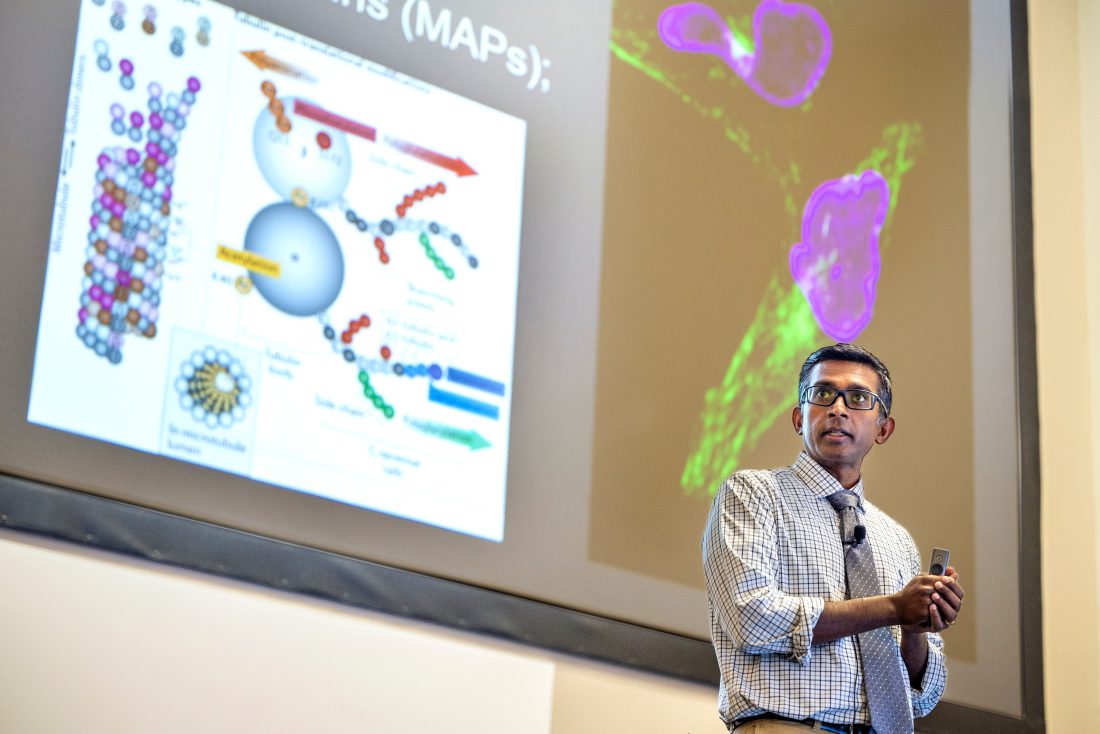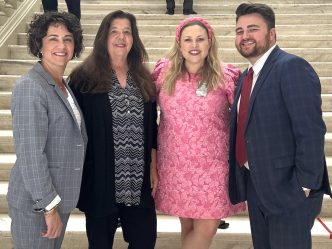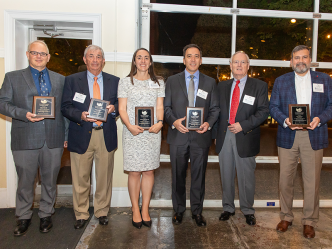Motor proteins running the natural roadways on the skeletons of our cells are hauling cargo that is both essential to life and can cause disease, scientists say.
They are working to learn just what this highly regulated transport system delivers normally, so they can also find what gets — or doesn’t get — delivered in genetic neurological diseases that can rob the ability to walk and breathe.
“We are trying to understand how these motors take things where they need to go,” says Dr. Graydon B. Gonsalvez, cell biologist in the Department of Cellular Biology and Anatomy at the Medical College of Georgia at Augusta University. “We are trying to figure out how it works and what cargo it attaches to because mutations in things that link up with dynein, both to its cargo and to dynein itself, are associated with a whole range of neurological disorders.”
Dynein, which Gonsalvez is referencing, is a family of motor proteins associated with conditions like spinal muscular atrophy, a group of hereditary diseases in which motor neurons in the spinal cord are killed off, affecting fundamentals like walking and breathing, as well as the progressive, inherited nerve disease Charcot-Marie-Tooth.
Gonsalvez is principal investigator on a new $1.9 million grant (R35GM145340) from the National Institute of General Medical Sciences that is enabling him to focus on this fundamental biological function with the idea of eventually better understanding how these kinds of resulting diseases happen and how to intervene.
The molecular motors, which Gonsalvez calls “little cars,” transport proteins, a basic building block in the body and drivers of biological activity, as well as RNAs that can make additional proteins, to the right place.
The motors travel the roadways on the cytoskeleton, or framework, for the cells, which functions much like our larger skeleton to give cells shape. It’s an ongoing process, as the proteins motors deliver wear out or need to be moved for some reason, he says, noting that life inside a cell can be a damaging place. But motor proteins are most busy during development, much like constructing a new home as opposed to making updates to the one you own. If the movement isn’t correct, a developing baby won’t survive. All this activity establishes and maintains cell polarity.
Back to the home-building analogy, fundamentally cell polarity is where content is located inside cells, much like the positioning of rooms and items inside a home, that make it functional. But in the cell, placement is far more serious because loss of polarity is incompatible with life, he says.
“There are different areas within the cell that do certain things and the proteins and RNAs and vesicles that are needed to perform that are sorted to that site,” he says of the strategic movement and placement.
While the differences are subtle, as a normal cell becomes a cancer cell, for example, its polarity changes because its function changes Gonsalvez says. Conversely, in good health and even with healthy aging, polarity doesn’t change much.
In the case of these neurological diseases, the changes are all genetic mutations, which potentially could even be repaired with, for example, gene editing techniques like CRISPR, he says.
“All these diseases are diseases of reduced function, something subtle is missing that has a big impact,” he says.
And motor proteins don’t work alone, they have cargo adapters, kind of like motorized trailers, that are linked to them and enable them to carry more cargo. Mutations in cargo adapters also are known to cause disease but there are not a lot of specifics known at this point, Gonsalvez says. But he thinks a major problem is with these cargo adapters not attracting and/or holding onto the right cargo as a result of mutations.
He notes that the motor proteins are one-way cars, with each having a specific direction and in this case, dynein is taking the cargo down the long road into the cell center, where it lets go of its cargo, detaches, defuses then does it all again. Kinesins are another group of motor proteins, which instead take items away from the cell but also are associated with diseases, including ALS.
Figuring out what motor proteins and their cargo adapters are carrying is no easy inventory. For one, these motors have to let go of their cargo when they get where they are going, so their attachment to them is comparatively weak by design, which means standard biochemical approaches to analyze what their carrying don’t work because they just make the load fall apart.
Instead Gonsalvez and his research team use a technique with a biotin ligase that attaches little groups of the B vitamin, to the motor and whatever is close to it, like those proteins it’s carrying. They then add yet another natural protein, streptavidin, which binds naturally to biotin, which enables them to purify the motor and cargo. Next, they use exacting analytics like mass spectrometry and proteomics to find exactly what the motor protein was binding to. They first used this approach to look at the eggs of the fruit fly because of easy access but are transitioning to the fly head which is literally full of neurons and motor proteins that function just like humans’, including having the same amino acids that can be mutated in dynein.
“There are mutations in these motors and in their cargo adapters that are associated with disease, but why are they associated with disease?” Gonsalvez says. “The thought is that they are deficient in some aspect of transport. Maybe the disease is because they are not transporting, X, Y and Z to where they need to be, but we don’t know what X, Y and Z are. We don’t know what the missing pieces are,” he says.
While you can’t give humans new motors, at least not yet, if you can understand what X, Y and Z are, it may be possible to otherwise deliver, for example, more of protein X to the cell center where it’s needed, Gonsalvez says.
As “the missing factors” are identified, testing would need to ensure that when that specific protein is MIA or a mutated version of it gets delivered, it actually causes disease. “But first you have to identify the cargo, and that is where we are at,” Gonsalvez says of connecting these important dots.
Once they know the normal contents, they can compare it to content from one of the potentially devastating neurological diseases that can result and find the difference.
“Everything is moving in us all the time and it’s moving using motors,” Gonsalvez says, noting that even the roadways the motor proteins travel move. When the cells that can divide do, like skin cells which actually divide very rapidly to replace those we constantly shed, those roadways also get torn up and reassembled.
He notes that motor proteins don’t move unless they have something to carry, because it’s a waste of precious energy, rather it’s when cargo adapters bind to them that the motors get to work. So far, in the diseases that have been looked at, the cargo adapters are present.
 Augusta University
Augusta University




